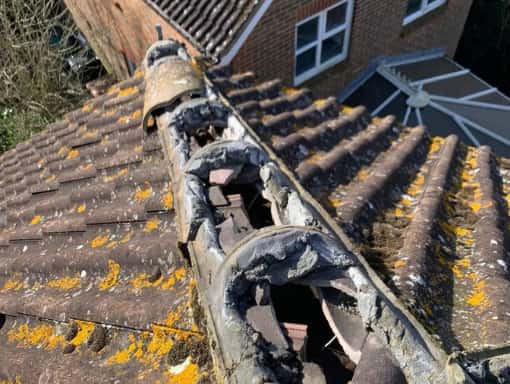A well-maintained roof is essential for your home’s overall integrity and lifespan. It serves as the first line of security against the weather, shielding your family and valuables from rain, wind, snow, and other outside elements. Roofs, however, can develop problems that necessitate timely repairs over time.
Neglecting these issues can lead to more significant damage, compromising your home’s structural stability and potentially resulting in costly repairs. In this comprehensive guide to roof repairs, we aim to provide homeowners with essential tips and insights to address roof issues promptly and effectively.
Signs of Roof Damage
Leaks
Leaks are one of the most common signs of roof damage. Check for water stains on ceilings or walls, especially after rainfall. Dripping water or damp spots indicate a roof leak that needs immediate attention.
Missing or Damaged roof tiles
Inspect the roof for any missing, cracked, or curled shingles. These can leave vulnerable areas exposed to moisture and lead to leaks. Please pay attention to granule build-up in gutters, which could indicate deteriorating shingles.
Sagging
A sagging roof is a clear indication of structural problems. It may be caused by weakened support beams or excessive weight on the roof. A sagging roofline requires immediate professional inspection and repair to prevent further damage.
Water Stains
Water stains on the ceiling or walls are a visible sign of a roof leak. They may appear as discoloured patches or dark spots. Check for any signs of water intrusion, even if the stains have dried.
Assessing Roof Issues
To effectively address roof issues, it is essential to assess the extent of the damage and identify specific problems. Here are some steps to help you determine roof issues:
DIY Inspection
Start by performing a visual inspection of your roof from the ground. Look for signs of damage, such as missing or damaged shingles, sagging areas, or debris build-up. Use binoculars if needed to get a closer look at specific areas.
Check Attic and Interior Spaces
Inspect your home’s attic or upper levels for any signs of roof damage. Look for water stains, dampness, or mould growth, indicating roof leaks. Check for any sunlight coming through cracks or gaps in the roof.
Assess Tile Condition
Examine the condition of your shingles. Look for signs of curling, cracking, or missing shingles. Check for granule loss in your gutters, which may indicate deteriorating shingles.
Inspect Flashing and Seals
Pay attention to the flashing, the metal material around chimneys, vents, and skylights. Check for cracks, gaps, or signs of deterioration. Inspect the seals around these areas to ensure they are intact and in good condition.
Evaluate Gutters and Downspouts
Inspect your gutters and downspouts for signs of damage or blockage. Check for shingle granules, debris build-up, or any sagging gutters that may indicate improper drainage.
Look for Signs of Pests or Wildlife
Check for signs of pests or wildlife that may have caused damage to your roof. Look for chewed or gnawed areas, nests, or droppings that may suggest an infestation.
Consider Age and Maintenance History
Please consider the age of your roof and its maintenance history. Older roofs may be more prone to issues, and a lack of regular maintenance can lead to accelerated wear and tear.
Consult a professional roofing contractor.
If you notice significant damage, or multiple issues or are unsure about the severity of the problems, it is advisable to consult a professional roofing contractor. They have the expertise to conduct a thorough assessment and recommend necessary repairs or replacements.
Remember, safety should be a top priority when assessing roof issues. If you are uncomfortable with heights or unsure about accessing your roof safely, it is best to leave the inspection to trained professionals.
By assessing your roof issues diligently, you can better understand the necessary repairs and take appropriate action to address them promptly. Whether conducting a DIY inspection or seeking professional assistance, being proactive in assessing roof problems can help maintain the integrity of your roof and protect your home in the long run.
Hiring Professional Roof Repair Contractors
When it comes to roof repairs, hiring a skilled contractor like Leicester Roofing Services is essential if you want good results. Choose a worker with a good reputation, the correct licenses, and insurance. Check online reviews and ask for personal suggestions to ensure they are reliable. Ask them specific questions about their experience, the materials they use, and how they fix things. Get a written contract that spells out the details of the job, how much it will cost, and any warranties or guarantees.
Professional roofing contractors know a lot, have experience, and have access to good supplies. They can find the real problems, fix them well, and give advice on how to keep things in good shape for the long run. By giving the job to trained professionals, you can have peace of mind knowing that your roof will be fixed well and your home will be safe.
